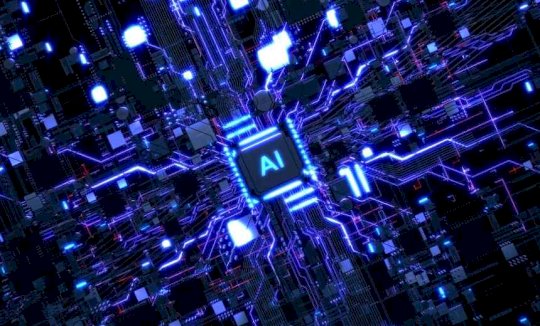Source: www.govinfosecurity.com – Author:
The Future of AI & Cybersecurity
Robert Rachwald • December 4, 2024

AI in Cybersecurity: Insights from Palo Alto Networks Unit 42®
The recently released threat intelligence report from Palo Alto Networks Unit 42®, Threat Frontier, provides a detailed analysis of the current cybersecurity landscape, with a particular emphasis on the role of artificial intelligence (AI) in shaping both cyberattacks and defense strategies. In this era of rapidly evolving digital threats, AI has emerged as both a tool for attackers and a vital asset for defenders. The report highlights the growing intersection of AI and cybersecurity, shedding light on how organizations can leverage AI to stay ahead of increasingly sophisticated adversaries.
The Role of AI in Cyberattacks
One of the key findings in the Unit 42 report is the increasing use of AI and machine learning (ML) by cybercriminals to automate attacks, optimize malware and evade detection. Historically, cyberattacks were largely manual processes carried out by individuals or small groups. Today, however, attackers can leverage AI-driven tools that allow them to scale attacks, quickly adapt to defense mechanisms and maximize the effectiveness of their operations.
1. Automating Attacks
AI is being used to automate various stages of cyberattacks, including reconnaissance and vulnerability scanning, to exploit weaknesses. Automated tools can conduct large-scale scans of the internet, quickly identifying systems with known vulnerabilities or misconfigurations. For example, AI can be used to probe networks for exposed IoT devices, unpatched software or weak passwords. Once a vulnerability is found, AI can exploit it far faster than human attackers, reducing the window of opportunity for defenders.
2. Improving Malware Effectiveness
Traditional malware often relies on basic signatures and simple rules to infect systems. AI-powered malware is capable of adapting to evade detection by traditional security tools. It can change its code, use advanced obfuscation techniques and even mimic legitimate network traffic, making it harder to identify as malicious. AI can also help attackers fine-tune their malware to be more effective by learning from past successes or failures, continuously improving its tactics.
3. Sophisticated Social Engineering
AI-driven techniques are also being used to enhance social engineering attacks. By analyzing social media profiles, emails and other publicly available data, AI systems can craft highly personalized phishing messages that are difficult to distinguish from legitimate communications. This increased level of sophistication makes AI-powered social engineering more likely to succeed, especially as the technology becomes more refined in mimicking human behavior and language.
AI in Cyber Defense: A Double-Edged Sword
While AI poses significant challenges in the hands of attackers, it is equally valuable in the defense against cyberthreats. The recent report from Unit 42 emphasizes that AI and ML are increasingly being integrated into cybersecurity defense strategies, providing organizations with enhanced capabilities to detect, prevent and respond to threats.
1. AI for Threat Detection and Response
AI is revolutionizing threat detection by enabling systems to identify anomalies and potential attacks in real time. Traditional signature-based detection methods struggle to keep up with the rapidly changing tactics of attackers, but AI models can learn from vast datasets to identify unusual behavior that might signal a breach. For instance, ML algorithms can flag deviations from typical network traffic patterns, pinpoint compromised endpoints or detect lateral movement within a network, often before an attack can escalate.
AI is aiding in automating responses to threats. Instead of relying solely on human intervention, AI-powered systems can autonomously block malicious IP addresses, isolate infected devices or cut off access to sensitive data. This ability to respond quickly and without human delay can be critical in mitigating the damage of a cyberattack.
2. Predictive Capabilities
One of the most powerful aspects of AI in cybersecurity is its predictive capability. By analyzing historical attack data, AI can predict the likelihood of future threats and recommend preventive measures. ML algorithms can sift through massive amounts of data from threat intelligence feeds, security logs and network traffic, identifying emerging patterns that indicate a potential attack. This allows organizations to proactively shore up their defenses before an attack occurs, rather than reacting to an incident after it has already started.
3. Improving Incident Response
The use of AI extends into incident response by assisting security teams in analyzing and prioritizing alerts. Traditional approaches to incident response can be overwhelmed by the volume of alerts generated by security systems. AI helps by filtering out false positives, triaging alerts based on severity and providing actionable insights. It can also assist in post-attack analysis, helping teams understand how an attack unfolded and where defenses broke down, allowing for better preparation in the future.
A New Arms Race: AI in Cybersecurity
On the offensive side, attackers use AI to enhance the scale and sophistication of their attacks. On the defensive side, organizations must continuously adapt to AI-driven threats while also developing and refining AI-based defenses.
As AI technologies continue to evolve, the challenge for cybersecurity professionals will be staying ahead of attackers who are constantly improving their methods. While AI can handle vast amounts of data and make real-time decisions, human analysts are needed to provide contextual understanding, interpret results, and make nuanced decisions that AI may not be capable of.
The Unit 42: Threat Frontier report from Unit 42 presents a compelling vision of the future of cybersecurity, one where AI plays a central role in both attacking and defending digital assets. The report underscores the importance of leveraging AI technologies to protect against increasingly sophisticated cyber threats, while also highlighting the risks posed by adversaries who are similarly adopting AI to improve their attack methods. To succeed in this new landscape, organizations must invest in AI-driven cybersecurity solutions, stay agile in the face of evolving threats, and continuously refine their defense strategies to stay one step ahead in the AI-powered arms race.
Original Post URL: https://www.govinfosecurity.com/blogs/ai-in-cybersecurity-insights-from-palo-alto-networks-unit-42-p-3772
Category & Tags: –
Views: 0




















































